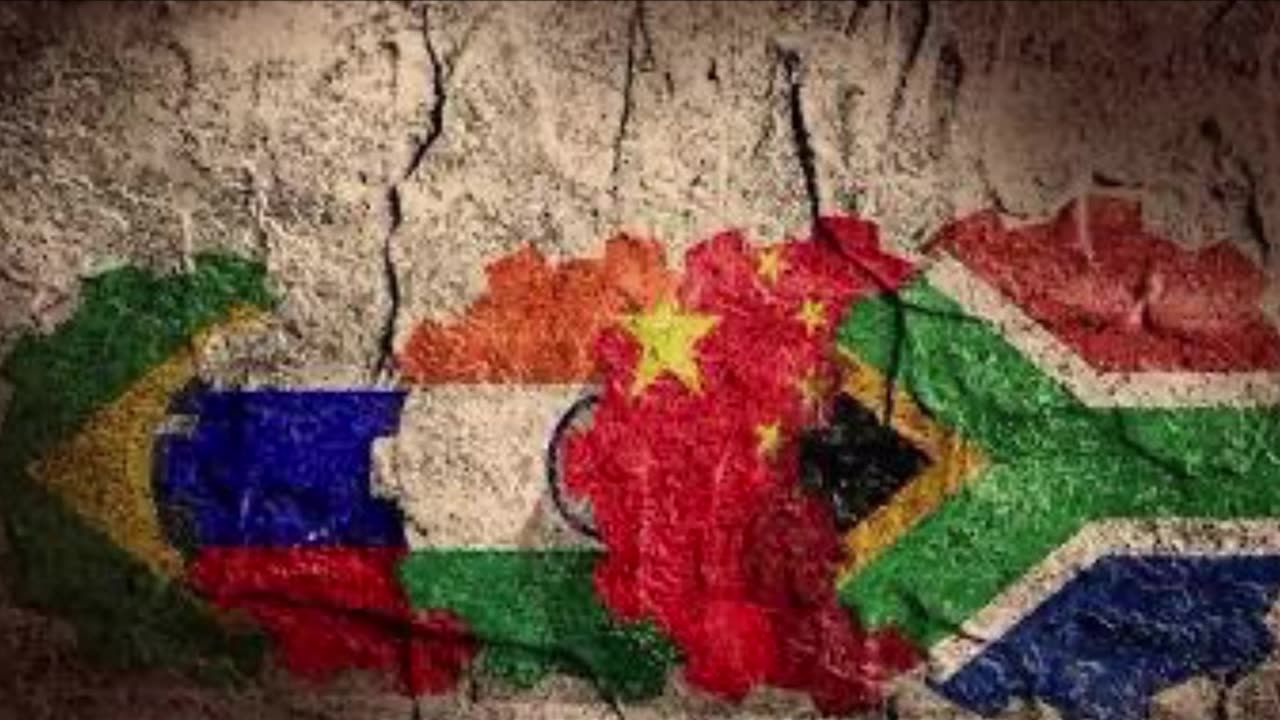Premium Only Content

History of BRICS nations
The BRICS Nations: Past as Prologue, Future in Formation
Ladies and gentlemen, esteemed colleagues, and honored guests,
Today, I invite you to journey with me through the evolving story of the BRICS nations—Brazil, Russia, India, China, and South Africa. This coalition, born not of geography or ideology, but of shared ambition and emerging influence, has grown from a clever acronym into a formidable force in global affairs. As we reflect on its history and peer into its future, we find a narrative of transformation, challenge, and immense potential.
🌍 Origins and Evolution
The term “BRIC” was coined in 2001 by economist Jim O’Neill, who identified Brazil, Russia, India, and China as the world’s most promising emerging markets. These nations, he argued, would drive global economic growth in the 21st century. Though initially a conceptual grouping, the BRIC countries embraced the idea and began formal diplomatic coordination in 2006. South Africa joined in 2010, transforming BRIC into BRICS and adding a vital African voice to the table.
From the outset, BRICS was more than an economic club. It was a statement—a declaration that the post-Cold War unipolar world was giving way to a multipolar reality. These nations, diverse in culture, governance, and geography, shared a common desire: to reform global institutions, amplify the voices of the Global South, and chart a path of development independent of Western dominance.
📈 Economic Ascent and Global Impact
The economic rise of BRICS has been nothing short of remarkable. Together, these five countries represent over 40% of the world’s population and nearly a quarter of global GDP. China’s meteoric growth turned it into the world’s second-largest economy. India emerged as a tech and services powerhouse. Brazil leveraged its vast natural resources, while Russia capitalized on energy exports. South Africa, though smaller in scale, brought strategic importance as Africa’s most industrialized economy.
In 2014, BRICS launched the New Development Bank (NDB), headquartered in Shanghai, as an alternative to the World Bank and IMF. With a focus on infrastructure and sustainable development, the NDB symbolizes the bloc’s commitment to financial sovereignty and South-South cooperation. The Contingent Reserve Arrangement, another BRICS initiative, provides liquidity support to members during balance-of-payments crises—further evidence of the group’s desire to build parallel institutions.
Yet, BRICS is not without its contradictions. The member states differ in political systems, economic models, and strategic interests. China and India, for instance, have experienced border tensions. Russia’s geopolitical posture often diverges from that of Brazil or South Africa. These differences have sometimes hampered consensus and limited the bloc’s ability to act as a unified force.
🌐 Geopolitical Significance
Despite internal divergences, BRICS has steadily asserted itself on the world stage. It has called for reform of the United Nations Security Council, greater representation for developing countries in global governance, and a more equitable international financial system. In doing so, BRICS has become a symbol of resistance to Western hegemony and a platform for alternative visions of globalization.
The bloc’s influence has grown in an era of shifting alliances and rising skepticism toward traditional multilateralism. As the West grapples with internal divisions and waning influence, BRICS offers a counterpoint—a coalition that champions sovereignty, non-intervention, and multipolarity.
🌱 The Road Ahead: Challenges and Opportunities
As we look to the future, the BRICS nations face a complex landscape. Internally, they must navigate economic slowdowns, political volatility, and social inequality. Externally, they confront a world marked by climate change, technological disruption, and intensifying great-power competition.
Yet within these challenges lie opportunities. The BRICS nations are uniquely positioned to lead on issues that transcend borders:
• Climate Action: With vast natural resources and growing emissions, BRICS must be central to any global climate solution. Cooperation on green technology, renewable energy, and sustainable agriculture could redefine their development trajectories.
• Digital Sovereignty: In an age of data and AI, BRICS can collaborate on digital infrastructure, cybersecurity, and ethical tech governance—building alternatives to Western-dominated platforms.
• Health and Resilience: The COVID-19 pandemic exposed vulnerabilities in global health systems. BRICS can invest in joint research, vaccine production, and public health networks to bolster resilience.
• Expansion and Outreach: Recent discussions about expanding BRICS to include countries like Argentina, Egypt, and Saudi Arabia signal a new phase. A larger BRICS+ could amplify its voice and deepen its impact—but it must balance inclusivity with cohesion.
💡 A Vision for the Future
The future of BRICS will not be defined by GDP figures alone. It will be shaped by the bloc’s ability to offer a compelling vision for global cooperation—one rooted in mutual respect, shared prosperity, and inclusive development.
Imagine a BRICS that pioneers a new model of globalization—one that values cultural diversity, prioritizes human well-being, and respects planetary boundaries. Imagine a BRICS that bridges the digital divide, empowers youth, and champions innovation from the Global South. Imagine a BRICS that, despite its differences, finds strength in solidarity and purpose in partnership.
This is not a utopian dream. It is a possibility—one that demands courage, creativity, and commitment.
🎤 Conclusion
In the grand arc of history, the rise of BRICS is a chapter still being written. It is a story of nations once on the periphery now stepping into the center. A story of ambition tempered by complexity, of unity tested by diversity.
As we stand at the crossroads of change, let us remember: the future is not something we inherit—it is something we build. And in the hands of the BRICS nations, that future may well be more balanced, more inclusive, and more just.
Thank you.
-
 16:39
16:39
Exploring With Nug
5 hours ago $2.77 earnedI Found a Car Underwater… and a Bag I Wish I Hadn’t Opened!
13K8 -
 LIVE
LIVE
NAG Entertainment
2 hours agoRUMBLE ROUNDTABLE: Twitter/X Space W/ChavezFlexingtn
113 watching -
 21:54
21:54
MYLUNCHBREAK CHANNEL PAGE
21 hours agoIstanbul Should Not Exist - Pt 2
37.4K8 -
 3:44:38
3:44:38
Michael Franzese
2 days agoOperation Freedom Fighter: Emergency Live
79.3K47 -
 1:08:10
1:08:10
Jeff Ahern
5 hours ago $4.48 earnedThe Saturday Show With Jeff Ahern
33.5K11 -
 6:11:36
6:11:36
Grant Cardone
9 hours agoGrant Cardone LIVE: The 10X Truth That Made My First $1 Million In Real Estate
52.7K8 -
 2:28:37
2:28:37
putther
6 hours ago $3.18 earned⭐ Bounty Hunting on GTA⭐
36.5K1 -
 11:14:06
11:14:06
Total Horse Channel
1 day agoAMHA 2025 9/20
110K3 -
 1:53:15
1:53:15
I_Came_With_Fire_Podcast
18 hours agoThe Satanic Cults Convincing Kids to Commit Violence
64.8K31 -
![Mr & Mrs X - [DS] Created Antifa To Push An Insurgency In This Country - Ep 8](https://1a-1791.com/video/fww1/f9/s8/1/k/f/O/j/kfOjz.0kob-small-Mr-and-Mrs-X-DS-Created-Ant.jpg) 1:02:13
1:02:13
X22 Report
10 hours agoMr & Mrs X - [DS] Created Antifa To Push An Insurgency In This Country - Ep 8
173K73